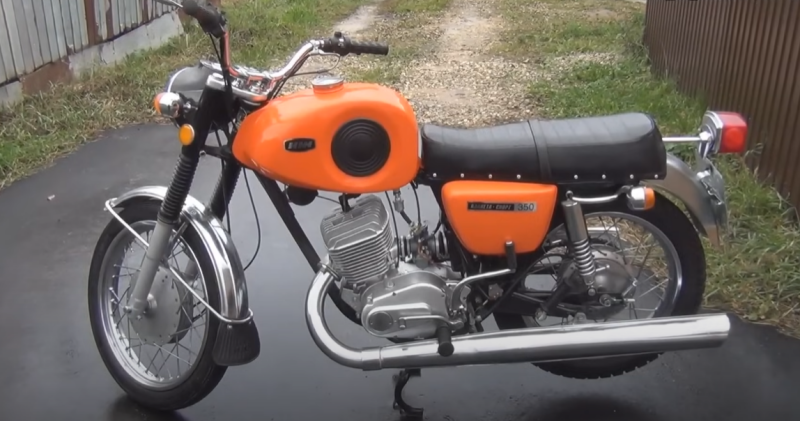Home
In 1934, the Grand Prix races were held according to a new formula, with, in fact, the only weight limit for cars at 750 kg.
These rules were of interest to the German government, whose political bosses wanted to show the "superiority of the Aryan race" (including engineering). For the development of racing cars, the Ministry of Transport allocated 600.000 Reichsmarks, originally intended only for Daimler-Benz.
But since Auto-Union unexpectedly announced that they also planned to participate in the European Championship, the ministry decided to divide the subsidy equally, that is, each company will receive 300 Reichsmarks. This amount did not look significant, especially against the background of the expenses of the Daimler Benz racing program, which annually spent approximately four million Reichsmarks.
"Project 22" was developed by Professor Ferdinand Porsche, who decided to use an unusual, at that time, chassis concept, where the engine was placed behind the racer. It is curious that initially this design was not intended for Auto-Union at all, but for Hochleistungfahrzeugbau GmbH, an organization founded by Ferdinand Porsche. But when they were approached by people from Auto-Union with a request to develop a car for the "Grand-Prix", Porsche told them that everything was ready!
Although there is an opposite version - that Porsche himself turned to Auto-Union with a ready-made project. However, this is not so important. And what is important is that the P-Wagen project was given the green light, after which it was renamed the Auto-Union Type A.
On January 12, 1934, Hans Stuck demonstrated the capabilities of the new car to the management of the concern. Under the terms of the contract signed with Ferdinand Porsche, the car had to pass the Avus ring at an average speed of 200 km/h, which was done: on the Auto-Union straights, the Stuck easily accelerated to a speed of 240 km/h. In this way, Porsche proved to the skeptics that the mid-engined design was technically sound.
Such an unusual, at that time, solution (the laurels of the pioneer belong to the 1922 Benz Tropfenwagen car) made it possible to remove the cardan shaft from under the racer, thereby placing it lower. This had a positive effect on both aerodynamics and lowering the center of gravity.
The heart of Auto-Union is a 16-cylinder unit with a displacement of just under 4,4 liters and a power of 295 hp. s, at 4500 rpm. This engine ran on both gasoline and exotic fuel blends. For example, on this one: 60% alcohol, 20% benzene, 10% diethyl ether, 8% gasoline, 1,5% toluene and nitrobenzene, 0,5% ricin oil.
The 1934 season was the first major test for Auto-Union, showing both the strengths and weaknesses of the new concept. The elimination of the latter in KB Auto Union began in the fall of the same year. The result of their efforts was the "Type B".
The changes affected both the engine and the chassis. The working volume of the engine was increased to 5 liters, the wheelbase was lengthened, the mass of the car was reduced, and the weight distribution was also changed. But all this did not help - Rudolf Caracciola, a Daimler-Benz racer, became the European champion in 1935. In response, Audi, I'm sorry, Auto-Union, prepared "Type C".
Bernd Rosemeyer: Der Herr der Ringe (The Lord of the Rings)
But perhaps the most important was the change in the pilot staff. In 1936, the former NSU motorcycle racer (this brand was part of the Auto-Union concern) debuted in the Auto-Union team, Bernd Rosemeyer, who became the European champion of that year. During a short but colorful career as a race car driver, Rosemeyer has driven exclusively cars with four rings on the hood.
In the 1937 season, out of 12 races in which both German teams participated, the Auto Union drivers won five times (Rosemeyer won four times), and another mountain race was won by der Bergkönig (Mountain King) - Hans Stuck.
But Caracciola became the European champion again! His Mercedes W125 had no equal in terms of power - 646 hp. With! However, in terms of fuel consumption too - 160 liters per 100 kilometers. And it's not a typo.
Having lost in the 1937 season to Caracciola in a heavy-duty Mercedes-Benz, the Auto-Union pilots expected to recoup the following season, with new rules.
In 1938, the Grand Prix regulations changed: the displacement of supercharged engines was limited to three liters (and 4,5 liters for naturally aspirated engines). The new car was developed without the participation of Ferdinand Porsche, and outwardly it looked more elegant than its predecessors. And besides, the power did not fall so much: from 520 to 485 hp. With. But Mercedes-Benz, by the way, also Auto-Union switched to V12 engines, won and in 1938 Caracciola again became the European champion!
instead of an epilogue
Our story will have no end. Just as he was not in the confrontation between Auto-Union and Mercedes Benz: after all, the champion of 1939 was never officially announced. In Germany, Daimler-Benz team driver Hermann Lang was appointed champion. And, for example, in the English-language Wikipedia, Muller is considered the champion. The question is which scoring system (minimum or maximum) prefers one side or the other. After Audi's return to the "Big Prizes", they will definitely have a chance to get even with Mercedes Benz for the "stolen title" of 1939.













